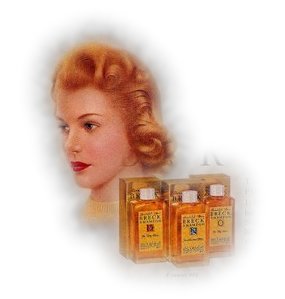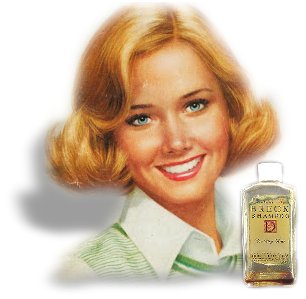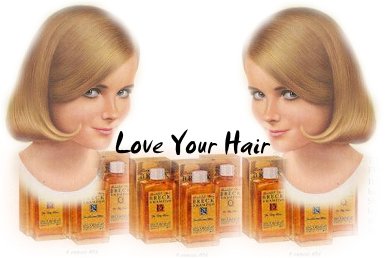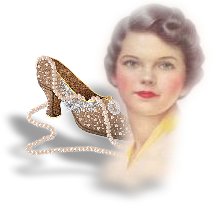
For this stroll you might need to brush your hair 100 strokes to get that shine, sweater and pearls are optional....
Let's meet the Breck Girl!

Because sometimes a shampoo is more than just a wash. Because shampoos, or at least their ads, really are a measure of the times.
Remember the Breck girl? If you are a woman and if you washed your hair between the years 1936 and 1976, you do. If mysteriously you don't, one sniff and memory would rush out of the bottle like a genie.
The Breck girl was the perfect blonde whose pastel portrait sold "beautiful hair Breck" to four decades of women. ( A few brunettes became Breck Girls too!) Maybe no other shampoo in the world has had such a strong identity. The Breck Girls portraits were born during the Depression and came of age in the 1940s and '50s, times that shook cherished values, including long-held beliefs about the roles of men and women. Advertising executives responded by crafting and presenting idealized images of an American woman they thought everyone could love, a woman both desirable and chaste.

The Breck Girls were and are real women. I've researched about a dozen who admit they still sometimes think of themselves as Breck Girls, and it's that connection between the real and the ideal that intrigues me most.
In 1936, Edward Breck, son of the founder of the Springfield, Massachusetts, shampoo company, engaged the services of Charles Sheldon, a commercial artist living in the area. Sheldon's early portraits for Breck depicted provocative, even sensual, female poses executed in pastels, with soft focus and halos of light and color to create highly romantic images of feminine beauty and purity. Sheldon and his successor, Ralph William Williams, perfected a vision of American womanhood that resonated powerfully for more than 50 years.

Today the shampoo is still around, but the Breck girls are a part of history. By the 1960s, at the height of its success, Breck held about a twenty percent share of the shampoo market and enjoyed a reputation for quality and elegance. Ownership of the company changed several times (American Cyanamid in 1963; Dial Corporation in 1990). The corresponding fluctuations in management of the company and in advertising expenditures tended to undermine the coherence of the national advertising campaign. In addition, despite William's modifications, the image had become dated. Attempts to update the image misfired, further limiting the brand's coherence and effectiveness. Finally, increased competition and an absence of brand loyalty among consumers through the 1970s and 1980s helped push Breck from its number one position into the bargain bin. The Breck Girl campaign was discontinued around 1978, although there have been at least two minor revivals, first in 1992 with the Breck Girls Hall of Fame, and again in 1995 when a search was begun to identify three new Breck Women.
The 188 pieces of original advertising art (62 oil paintings on board, 2 pencil sketches on paper, and 124 pastels on paper) and approximately 5 cu. ft. of related photographs, correspondence and business files in this collection document the development and evolution of the Breck Girl, a highly successful and long-lived advertising campaign whose hallmark was its vision of idealized American womanhood. The Breck Girls ads are now in the advertising history records in the Smithsonian National Museum of American History.

The Breck Girls:
1937 Roma Whitney Armstrong at age 17, first Breck Girl
1937 Anya Taranda
1937 Alice Anderson
1948 Marylin Skelton
1963 Ginny Guild
1968 Cheryl Tiegs
1968 Cybill Shepherd
1971, 1973 Jaclyn Smith
1972, 1974 Kim Basinger
1974 Brooke Shields
1975 Farrah Fawcett
1976 Erin Gray
1978 Michelle Robin
1981 Christie Brinkley
Even if you have to find it at the dollar store, maybe you should pick up a bottle just for old times sake...and be a Breck Girl for the day!
